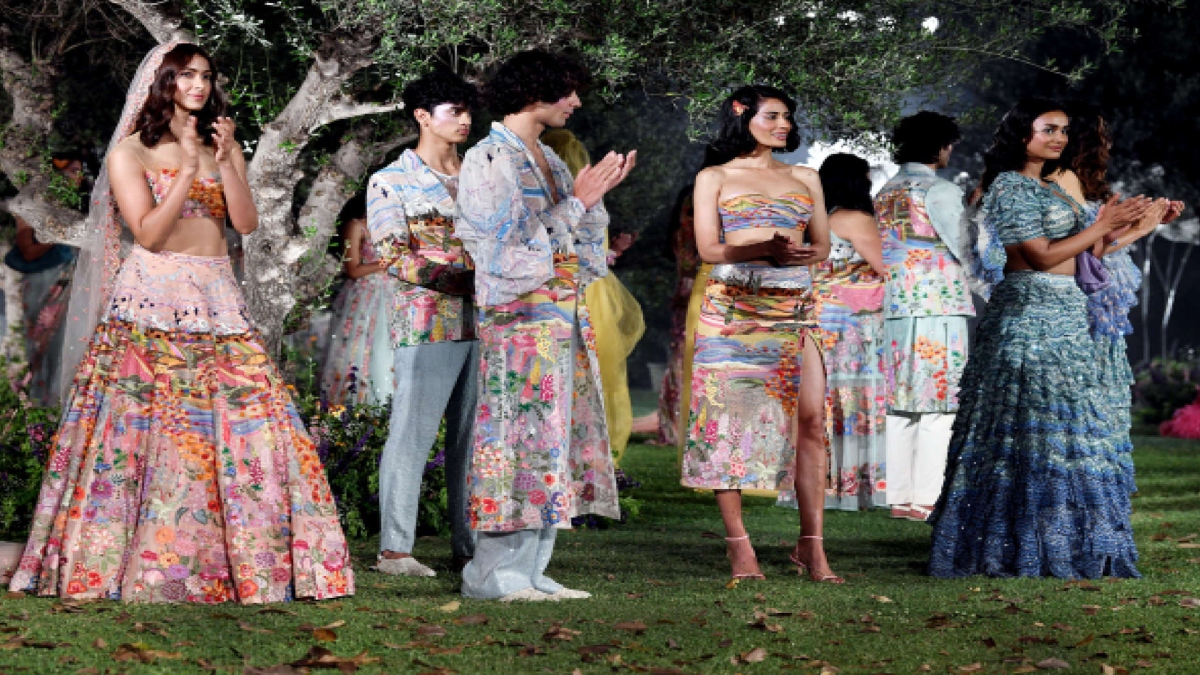Every second, the equivalent of one garbage truck of textiles lands in a landfill or is burnt.
Worldwide, the sale of clothing and its disposal is rising. Estimates suggest that in the last 15 years, the average number of times a garment is worn before being discarded has come down by one-third.
This comes in the wake of a steadily growing fast fashion industry, or mass production of trendy clothes at low cost. In the year 2021, the global fast fashion market witnessed a remarkable year-on-year growth of 21.9%, i.e. sale grew to $30.58 billion from $25.09 billion in 2020. Worryingly, this trend is expected to escalate, and bring with it a considerable environmental cost to society. Textiles are emerging as the second most polluting industry, contributing around 2-10% of global GHG emissions.
A circular economy approach can make the entire textile value chain more sustainable. Unlike linear economy, circular economy entails bringing products that have reached the end of their useful life, back into the product value chain. It requires re-thinking and re-engineering every stage, be it design, production, distribution, sale, consumption and disposal, for enabling better material recovery and recycling.
However, circularity has unique sector-specific interpretations. In the case of textiles, it entails innovations in “design for environment”, including design for longevity, disassembly, and repairability.
Circular business models need to be developed and promoted. Brands need to pitch in by bringing recycling, re-purposing, renting and buy back, to the centre-stage of branding.
Simultaneously, consumer education needs to be prioritised. According to a report by Fashion Revolution, information is currently unavailable to majority consumers. Where it is available, it is either excessive or confusing. Thus, despite greater environmental consciousness, especially amongst millennials, few discernible shifts in consumption behaviours are visible.
The textiles sector abounds with a plethora of ecolabels like Better Cotton Initiative, B Corporation, EU Ecolabel, and India’s Ecomark scheme. Ecolabels are intended to inform consumers about the sustainability of products to enable them to make more responsible choices. However, the excess of standards and labels is serving no one. On the one hand, the industry is getting over-burdened with certifications and cost of compliance, whereas on the other, it is leaving the consumer more confused than ever.
The labels also need be made more purposeful by ensuring that information communicated through them is standardized and simple. Education is at the heart of addressing the problem of information asymmetry, as it empowers environmentally-conscious consumers to make informed choices.
Textile circularity further requires a robust recycling infrastructure, that prioritises up-cycling as opposed to down-cycling. Globally, less than 1% of textiles and clothes are up-recycled into new garments of equivalent quality. 20% disused textiles are estimated to be collected worldwide, most of which are down-cycled for lower-value purposes.
India, especially Panipat, has emerged as a popular global recycling hub, where textile waste is converted to low quality blankets, floormats, and industrial wipes. Unfortunately, the bulk of recycling infrastructure is catering to imported post-consumer textile waste. India imports $293.7 million worth, or 6.3% of the overall global imports of worn clothes and textiles.
More textile waste originating in India needs to find its way to recyclers. Lately some take-back programs have been initiated by international brands, but the overwhelming majority of used clothing is still either being donated as charity, downcycled to low grade applications for cleaning, or disposed-off in the municipal waste stream. More recycling hubs need to be promoted by improving access to finance and state-of-the-art technologies, and by rationalising burden of environmental compliances.
As we target circularity in textiles, consumer awareness, innovative business models, branding around sustainability, data, and waste management infrastructure are emerging as areas for future action. This would require coordinated and collaborative efforts between government, industry and civil society stakeholders, especially in the backdrop of COP26 and the fashion industry’s commitment to Net Zero.
It’s time to future-think fashion.










